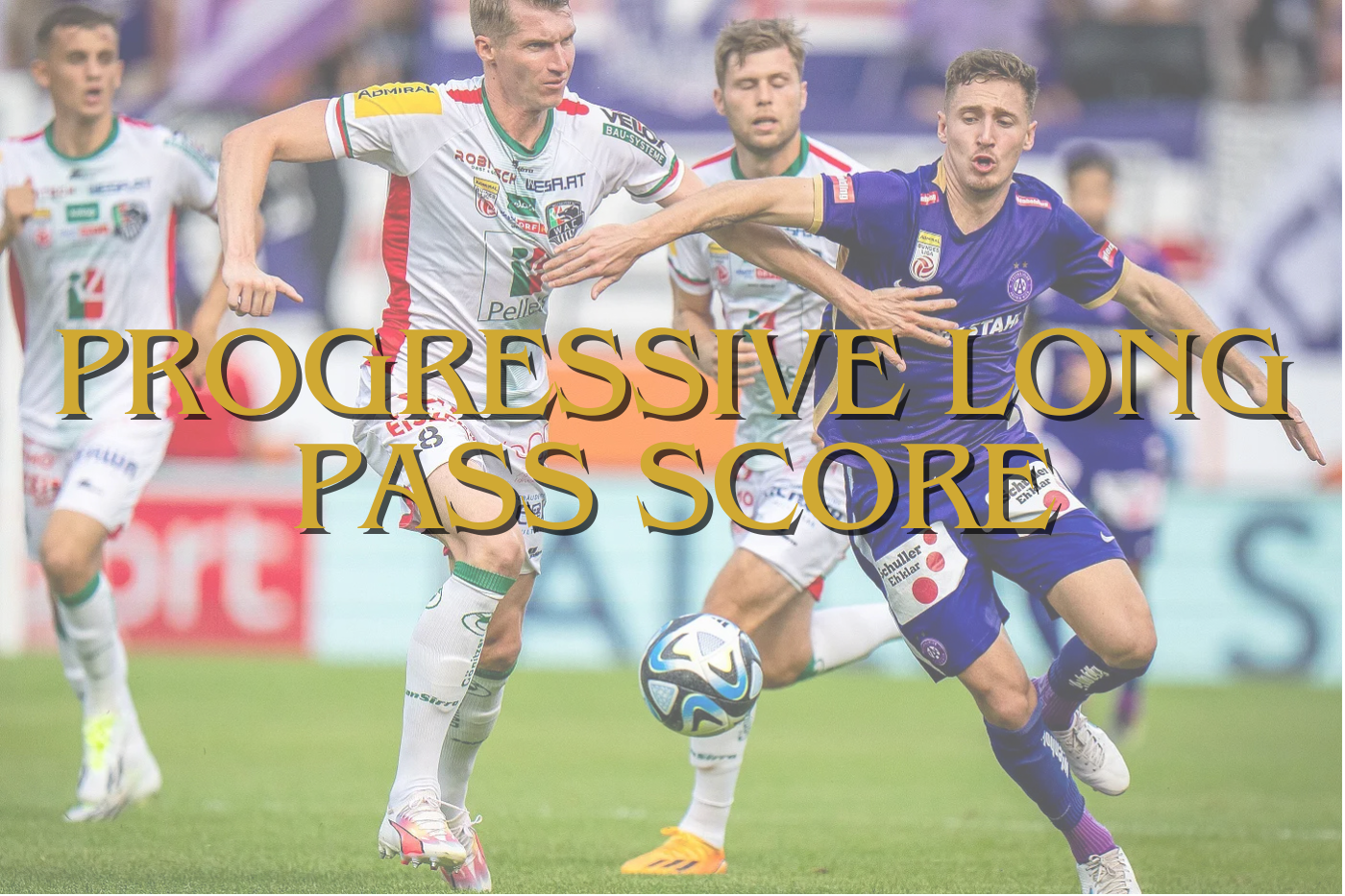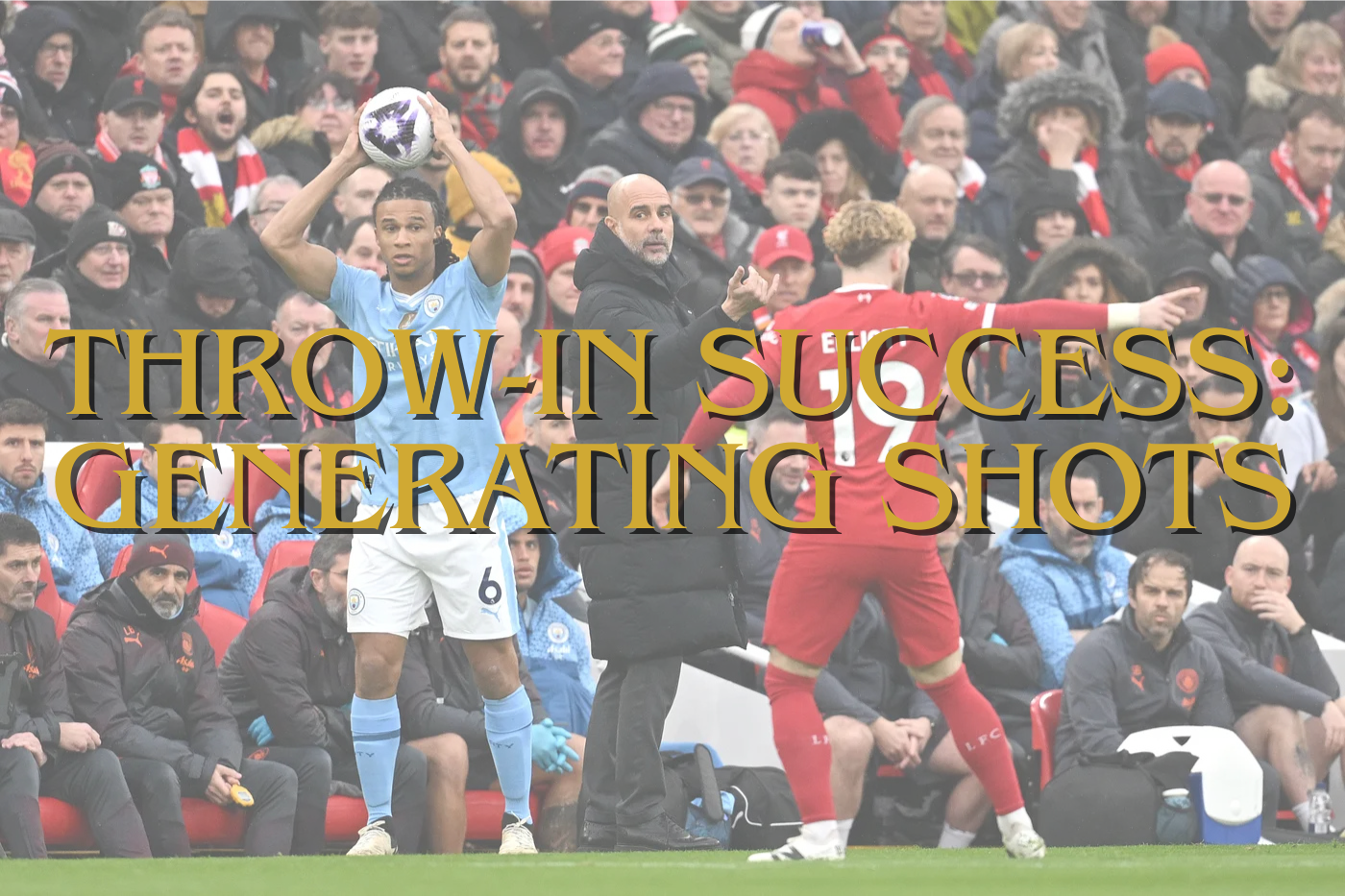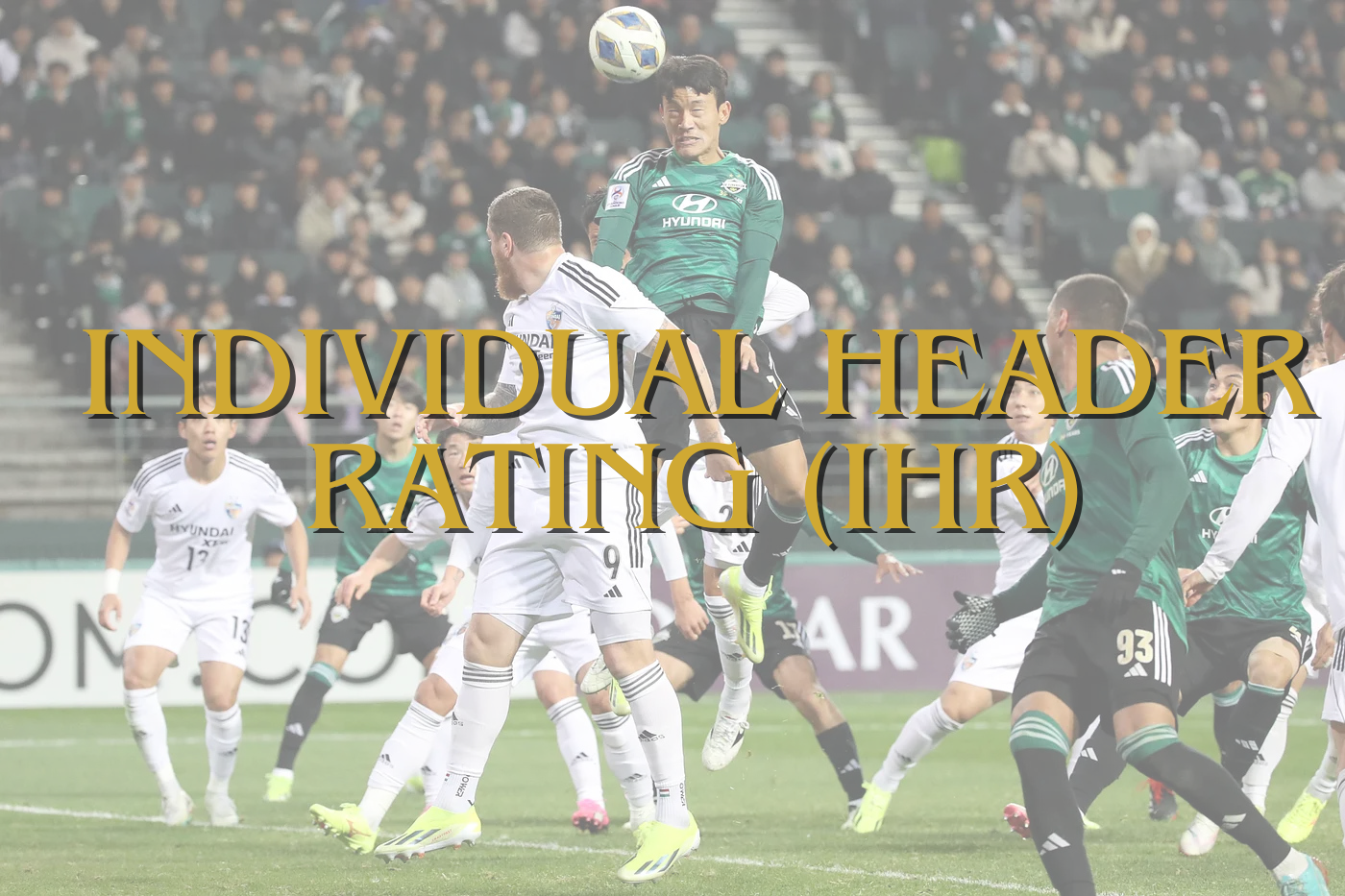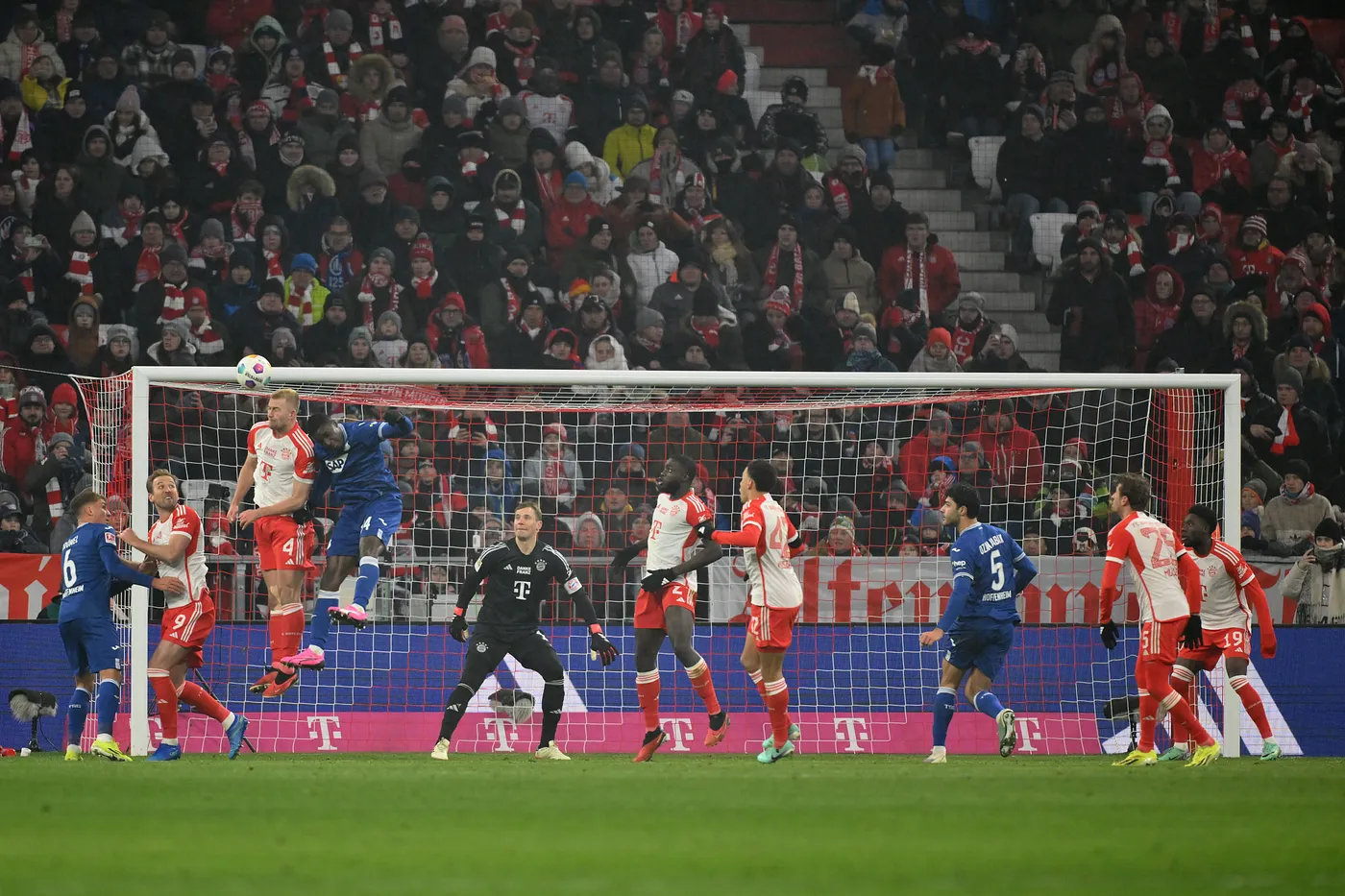The world of women’s football has been growing a lot in the last decade, but we can see another innovative progression after the Euro 2022 in England. We are now at a crossroads in women’s football where investment is growing all across the board, which also means that the margins are becoming smaller and details are much more important.
This is also the case in the world of analysis. How do we make sure that our players/teams/leagues have that edge over the competition? It means analysis in the margins and that also means looking at theoretical concepts and the practical outcome. I wanted to do this whilst looking at the NWSL in the United States in the 2022 season.
The metric I have chosen is goals added (G+) and the player I have chosen for this case study is Sophia Smith. Smith is an exciting talent and it would be interesting to me to see how she does in this specific metric that adds value to each action in terms of the ultimate goal: scoring goals.
DATA
This is a data analysis of Sophia Smith’s season in the 2022 NWSL, but it also focuses on the overall performances of players in terms of goals added. The database contains all players with minutes in the 2022 NWSL season with an emphasis on attacking and creative players.
The data was collected on November 14th 2022 and has been collected from American Soccer Analysis, who have calculated their own data in terms of expected goals, expected passing and goals added — the latter is what we will focus on.
SOPHIA SMITH

- Name: Sophia Smith
- Date of birth: 10–08–2000
- Nationality: American
- Position: Attacker
- Current club: Portland Thorns
- Previous clubs: Stanford (Y)
- International: United States(27 games)
Sophia Smith was drafted in the first round of the 2020 NWSL draft and has played for Stanford before. In Portland, she has grown into a full senior international in the US team, as well as a seasoned player in the NWSL. In 18 games in the 2022 NWSL season, she managed to score 14 goals and give 3 assists, meaning that she was involved in 1,31 goal contributing actions every 90 minutes.
She has been instrumental into Portland Thorns’ championship in 2022 and has scored many important goals in the process. In this analysis we want to find an answer to the question: how much value does she bring to the team and the league, by assigning values to her actions with the theory of goals added (G+).
GOALS ADDED
American Soccer Analysis created the goals added metric to assign values to each action into an attacking phase or defensive phase. They explain it like this on their website:
“Goals added (g+) measures a player’s total on-ball contribution in attack and defense. It does this by calculating how much each touch changes their team’s chances of scoring and conceding across two possessions.
For example, at the moment a player receives the ball at midfield, their team might have a 1.5% chance of scoring on that possession but also a 1% chance of conceding on the next possession. That situation isn’t very valuable. But if they play a throughball from there into the final third, their team is now in a much better situation and might have a 6% chance of scoring and only a 0.5% chance of conceding. The pass would be worth the difference in their team’s situation before and after it, or (0.060–0.005) — (0.015–0.010) = +0.050 goals added.
Goals added only looks at the likelihood of goals. It doesn’t give players any credit for actually scoring. So a striker will be rewarded for finding space to receive a pass in a good position and may earn some shot value for turning a possession into a shot on target, but that value won’t change depending on whether the goalkeeper saves the ball. This keeps the model from assigning too much importance to finishing, which statistically is almost random, and instead rewards actions that consistently lead to goals.”
If you want to read more about it, you can read it on the American Soccer Analysis website, here and here.
Goals added can both work in attacking sense as in defensive sense, but we will only focus on the attacking one. The reason why we have chosen for that is that we want to measure the value of the attacking actions of Sophia Smith in the chain of events toward the likelihood of scoring a goal.
Goals added can be divided into the following categories:
- Shooting: how much does shooting contribute to goals added?
- Receiving: how much does receiving the ball after a pass contribute to goals added in the whole chain?
- Passing: how much does passing the ball (+receiver) contribute to goals added?
- Dribbling: how much does dribbling, take-ons and carrying the ball contribute to goals added in attack?
- Interrupting: how much do interceptions, tackles, blocks, clearances, recoveries, and contested headers contribute to goals added?
- Fouls: fouls committed and received
These categories will feature in the data analysis and visualisation that will be done below.
ANALYSIS
Before delving into the actual analysis, it’s important to make sure that the database is representative of the quality and level of the league. A player with 900+ minutes will be more representative than someone with 50 minutes in the 2022 season. Our complete database consists of 286 players of which goals added is recorded/collected.
This means that we have made a cut-off in terms of minutes. We have made it the equivalent of 5+ games and decided to take 500 minutes played as the minimum. This means that our database shrinks from 286 players to 196 players who are eligible/representative for our research.
In this analysis we will first refer to the goals added (G+) in relation to the minutes played to show the representation. After that, we will refer to the specific aspect of goals added to the total goals added.
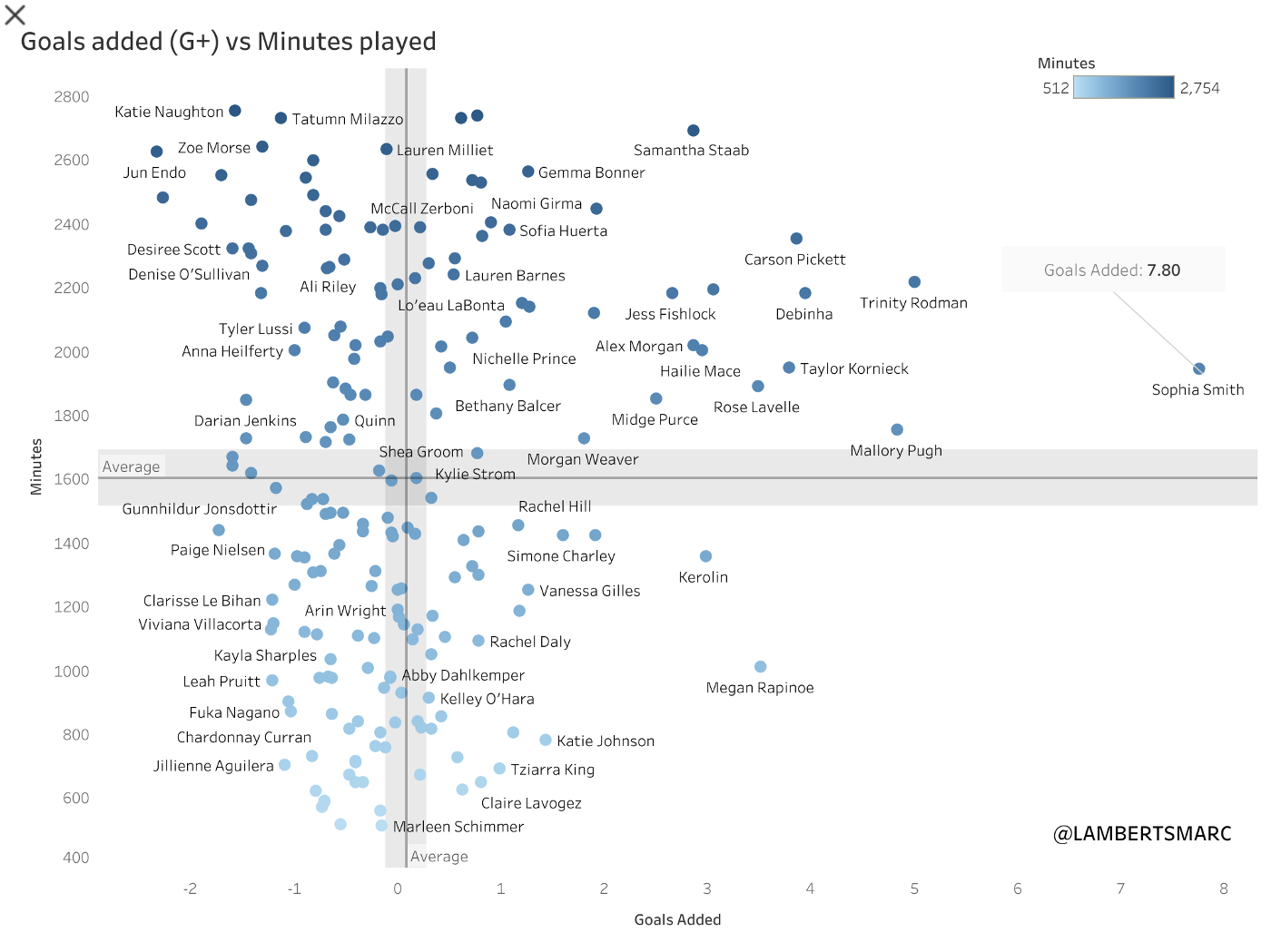
In the scatterplot above you can see the total of goals added in relation to the minutes played. The average minutes played are 1603 minutes and the average of goals added is 0,08 goals added.
With goals added we measure the actions that contribute to the likelihood of a goals scored, but it definitely looks at multiple actions in comparison to expected goals. If we look closer to Sophia Smits we can see she has above average minutes with 1945 minutes, but has the highest goals added of the whole NWSL in the 2022 season with 7,8 goals added over the whole season. What does this mean? In the whole season, her attacking actions have contributed to the likelihood of 7,8 goals being scored.

In the scatterplot above you can see the shooting (G+) in relation to the total of goals added. The average shooting (G+) is 0,02 and the average of goals added is 0,08 goals added.
Sophia Smith scores very high on the goals added metric as shown above, but she also is by far the best in accumulating shooting (G+) with 1,85 shooting (G+). The next player coming close to her is Alex Morgan with 1,18.
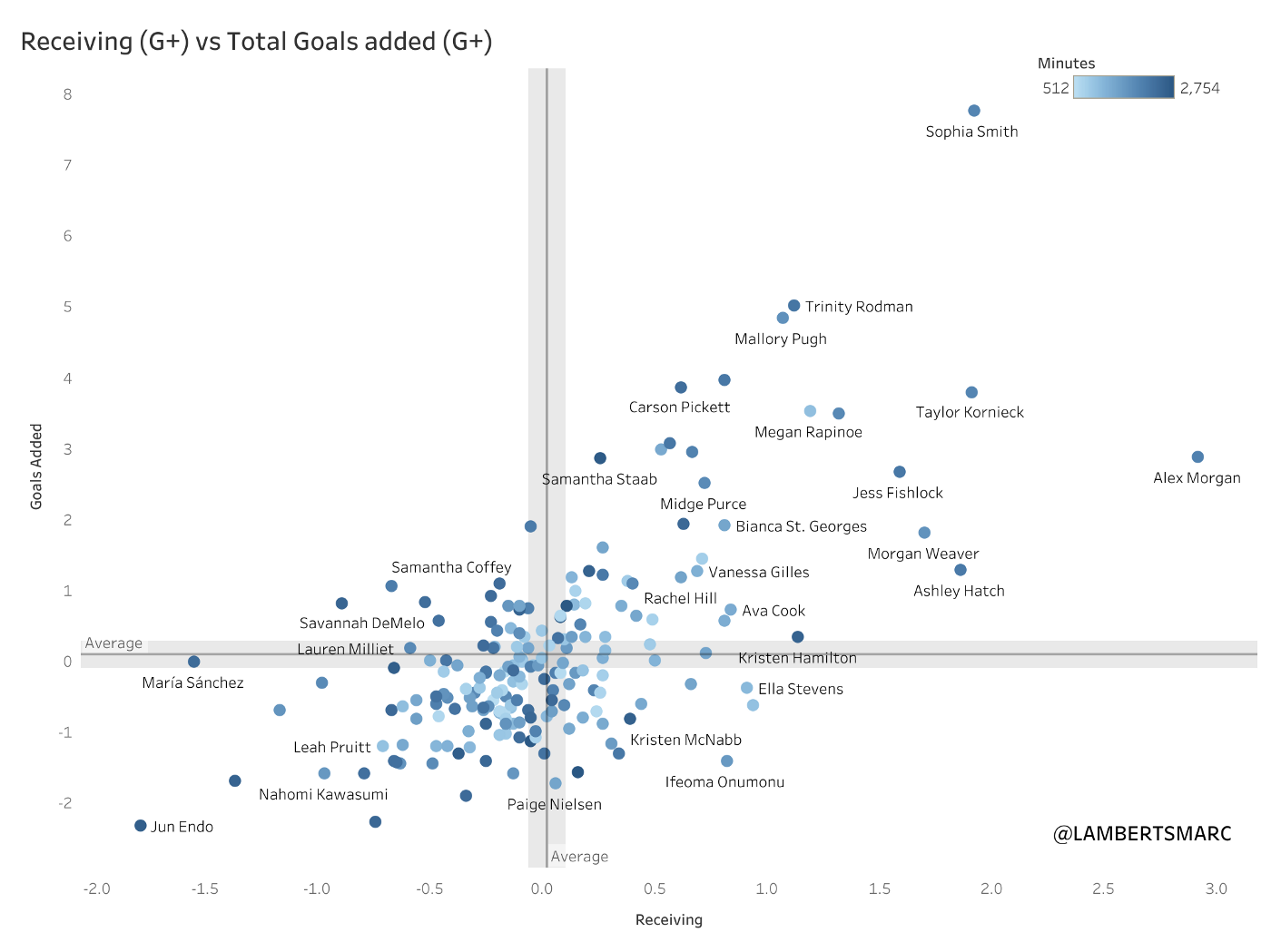
In the scatterplot above you can see the receiving (G+) in relation to the total of goals added. The average receiving (G+) is 0,02 and the average of goals added is 0,08 goals added.
Sophia Smith scores very high on the goals added metric as shown above, but she isn’t the best in the metrics of receiving (G+). She has 1,92 receiving G+, which is the second highest in the database after Alex Morgan. Taylor Kornieck (1,91) and Ashley Hatch (1,86) follow closely.
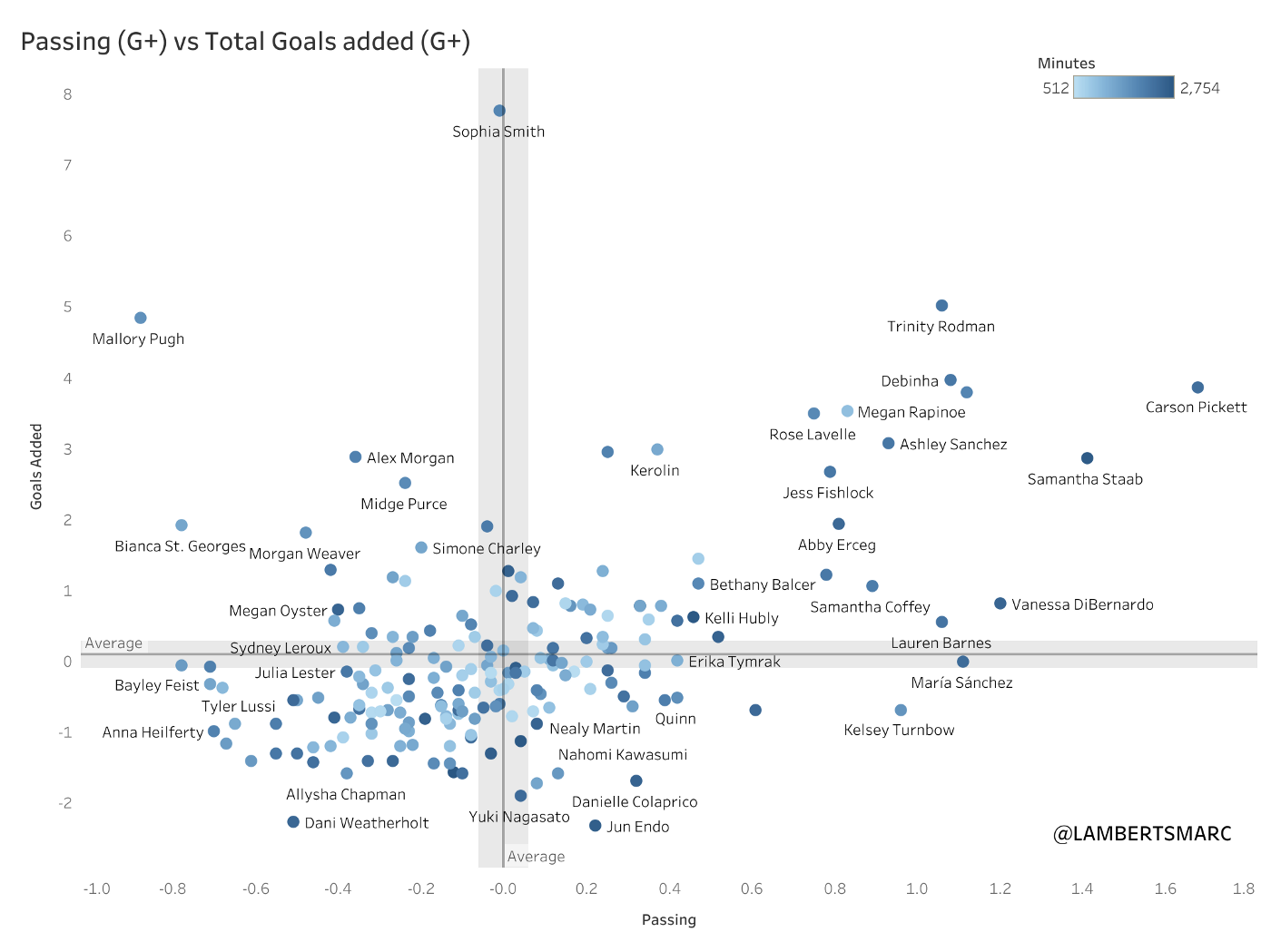
In the scatterplot above you can see the passing (G+) in relation to the total of goals added. The average passing (G+) is 0 and the average of goals added is 0,08 goals added.
Sophia Smith scores very high on the goals added metric as shown above, but she doesn’t score high in the passing (G+). In fact she scores below average with -0,01 and there are many players scoring higher than her on the passing (G+) in the 2022 NWSL season.

In the scatterplot above you can see the dribbling (G+) in relation to the total of goals added. The average dribbling (G+) is -0,04 and the average of goals added is 0,08 goals added.
Sophia Smith scores very high on the goals added metric as shown above, and she scores very high on the dribbling metric as well. She is second after Mallory Pugh, with 3,12 dribbling G+. The high number indicates that this is a significant part of her total goals added.
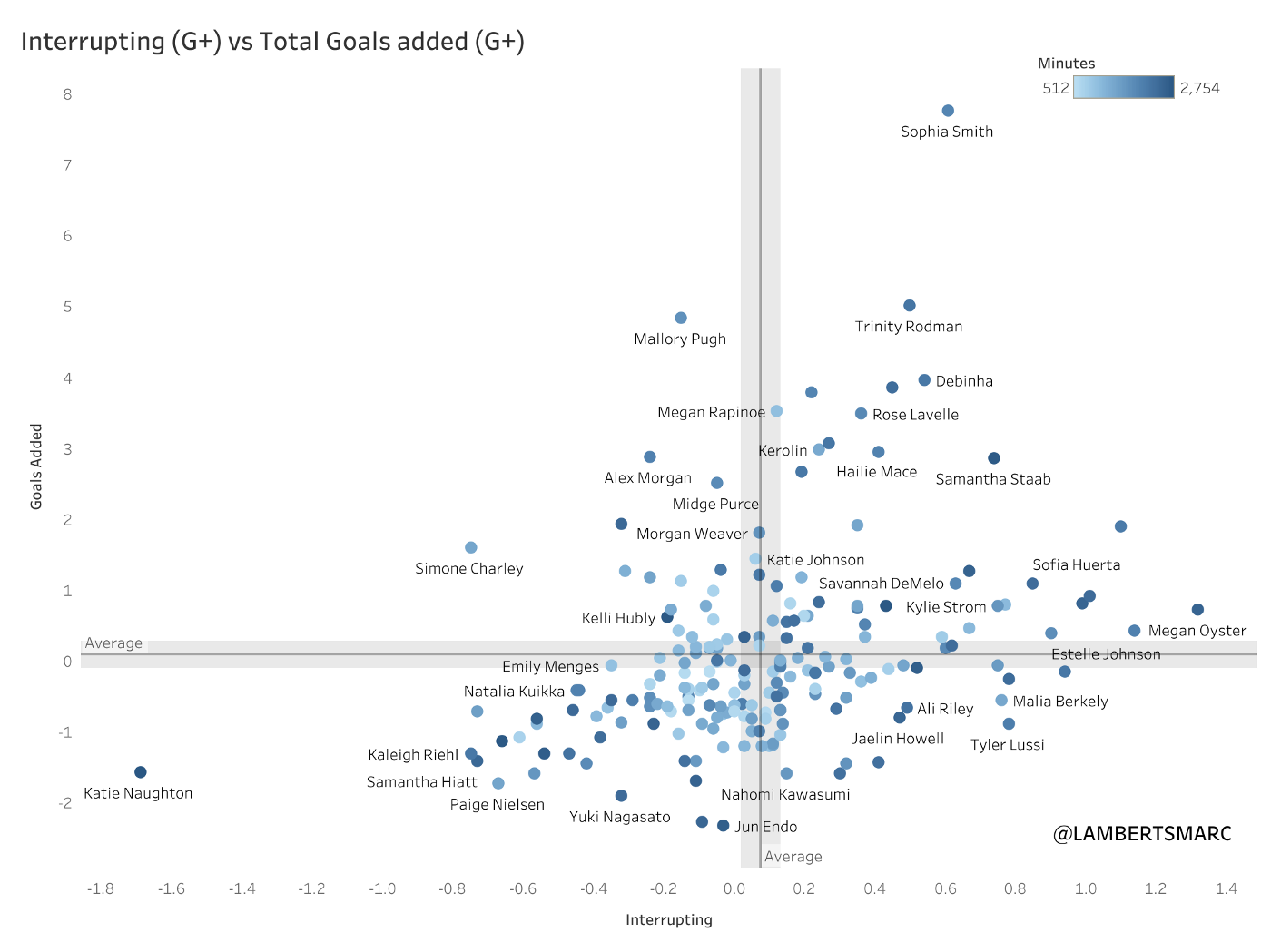
In the scatterplot above you can see the interrupting (G+) in relation to the total of goals added. The average interrupting (G+) is 0,08 and the average of goals added is 0,08 goals added.
Sophia Smith scores very high on the goals added metric as shown above, and she scores quite high on the interrupting (G+) as well with 0,61 interrupting G+. 20 players score higher than her, meaning that she is in the high average for this metric.
FINAL THOUGHTS
With goals added we can assign values to attacking actions within a chain of events for every player. We can see that Sophia Smith has 7,80 G+ in total, but these are mostly generated in shooting, receiving and dribbling. Passing isn’t as impactful and interrupting is in the high average.
From this information, we can say that her threat and contribution going forward, mostly come from her shots, where she receives passes, and her ability to dribble/carry the ball — which makes her one of the highest performers in these metrics. Overall, she scores highest with 7,80 G+ in the 2022 NWSL.


